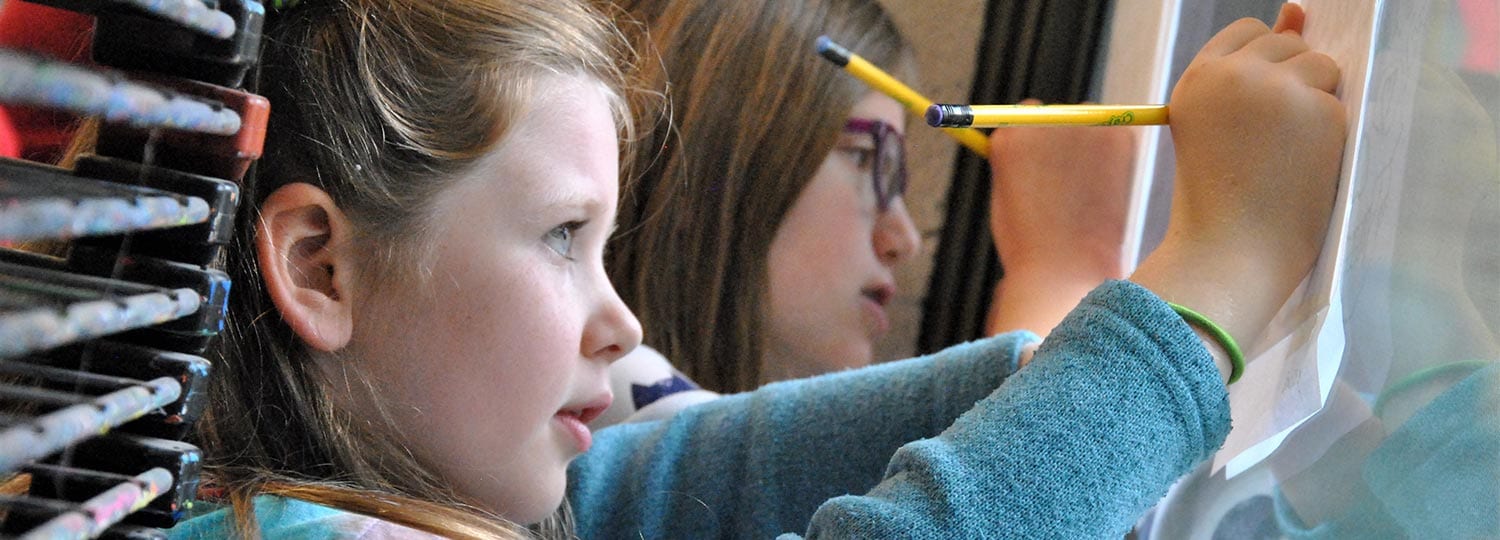Reading Workshop: Raising Lifelong Readers, Learners at Warwick Valley
Thursday is book-shopping day for Lucianna Rivera, a Park Avenue first-grader, and she can’t wait to restock her book-pouch with new reads from her classroom library.
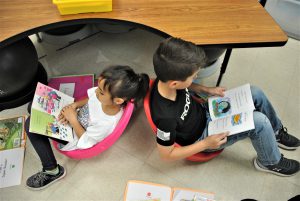
Park Avenue first-graders Lucianna and Landon choose humorous stories and scoop seats for their independent reading time.
“First I look at the cover to see what it’s about,” Lucianna explains. “Then I take a sneak peek inside. If it looks like a funny book, I put it in my pouch.”
Book-shopping is one of the defining activities of the Reading Workshop, a reading approach practiced by Warwick Valley students at the elementary level. The approach combines student choice with the structured development of comprehensive reading and literacy skills to encourage lifelong readers and learners.
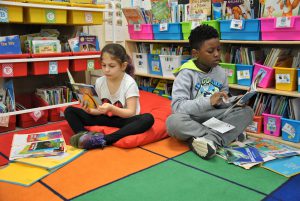
Each student is assigned one day a week to “shop” for books in their classroom library.
Now an integral part of elementary learning in Warwick schools, the Reading Workshop is supported by robust classroom libraries designed to meet all students’ interests and reading needs.
After Lucianna selects eight books, including two to take home, she joins her reading partner, Landon Tarazona, and together they decide on a seating option for independent reading time: scoop seats, beach chairs, bean bags, rug, cushions?
After reading on their own for 20-30 minutes at a time, Lucianna and Landon read to each other and use sticky notes to flag questions, thoughts, and new knowledge to share.
As they read, their teacher, Laura Campora, checks in with each reading pair and meets individual students where they’re at in their fluency, while encouraging their interests and choices. The reading is guided by unit lessons that build on each other to advance the students’ reading strategies and skills. This week’s unit focused on book characters and their traits.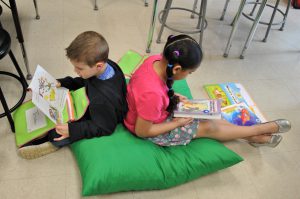
“The Reading Workshop approach can make a reader out of the most reluctant student,” Mrs. Campora said. “I think the ability to choose books they can read, in the topics that interest them, allows them to succeed as readers and become knowledgeable in an area they relate to. That success builds confidence and capacity in other areas like vocabulary, spelling, word choice, as well as other disciplines, such as science or mathematics.”
Landon is quick to articulate the same benefits in his own words. “Reading a lot helps me learn new words and what they mean, and it helps me with my writing too,” he said. Combined with student-choice, the approach also sets the stage for joyful reading in the classroom, and at home. “I like to read funny books and chapter books that are fiction. They make me happy,” Landon added.
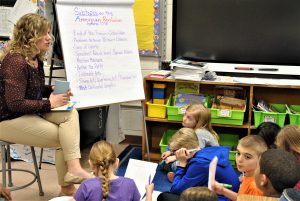
Sanfordville fourth-graders in Jenny Augelli’s classroom choose reading subtopics on the American Revolution to research and share with their peers in an upcoming Reading Workshop.
Each workshop session culminates with “a share”: the class regrouping to talk about what they read and what they learned. Making good use of their prized sticky-notes, students share with their peers about their developing expertise in the topics they choose. This share component of the workshop challenges students to think deeply about what they read and drives the development of critical communication skills.
As students continue to advance in the Reading Workshop through fourth grade, reading strategies become increasingly complex.
In Jenny Augelli’s fourth-grade classroom at Sanfordville Elementary, a recent lesson helped students use the appropriate “reading lenses” for different subjects, by asking different sets of questions.
The class was reading about the American Revolution and tasked with identifying and creating a timeline of the events leading up to it. The prescribed “reading lenses” consisted of who-where-when questions.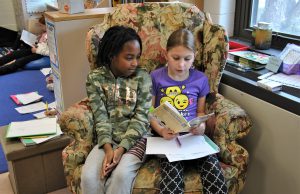
The approach was working for Peyton Komorsky. “I like learning about interesting facts and how it prepares me for the real world by teaching me how to research,” Peyton said. “It also helps all things related to reading and writing.”
Peyton’s teacher, Mrs. Augelli, sees class-wide impact as well. “The Reading Workshop has brought forth a rich love of reading in my students,” she said. “It allows them to choose ‘just right’ books to read independently and to apply the reading strategies and skills we model in the classroom.”
 The Reading Workshop is also supported by Alisa Kadus, the literacy coach at the elementary level. “These are examples of classrooms where the teachers have put a significant amount of energy and time into the structures and routines of the workshop model from day one,” Alisa Kadus said. “The workshop model gives students independence and choice while allowing the teacher to differentiate instruction and meet the needs of all students.”
The Reading Workshop is also supported by Alisa Kadus, the literacy coach at the elementary level. “These are examples of classrooms where the teachers have put a significant amount of energy and time into the structures and routines of the workshop model from day one,” Alisa Kadus said. “The workshop model gives students independence and choice while allowing the teacher to differentiate instruction and meet the needs of all students.”

